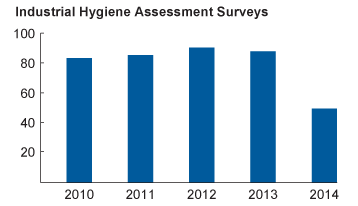Safety Performance
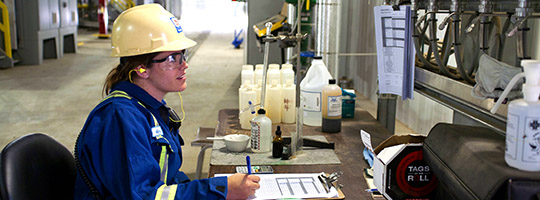
Pikes Peak South
Purpose and Progress
Husky delivers operational reliability while strengthening its safety record through rigorous occupational safety programs and ongoing improvements in process safety, including clear procedures and workforce education.
For a fourth year, the rate of critical and serious incidents per hours worked declined. To enhance existing policies and procedures, the Company communicates the risks most associated with potential serious injuries and fatalities to employees and contractors so actions can be taken to mitigate those risks.
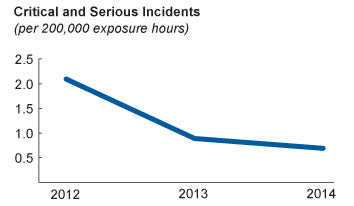
Process Safety Events
Definitions of Tier 1, 2 and 3 process safety events are used to assess releases and other Loss of Primary Containment outcomes. Incidents are investigated to determine how to improve equipment reliability and related operating integrity practices.
The definitions align with those of the American Petroleum Institute, the American Institute of Chemical Engineers’ Center for Chemical Process Safety and the International Association of Oil and Gas Producers.
Total Recordable Injury Rate
The total recordable injury rate (TRIR) measures lost time, restricted work and medical aid incidents and fatalities.
In 2014, Husky achieved a 0.80 TRIR, which means there was less than 1.0 recordable injury per 100 workers per year, down from 0.90 the year before. The rate has declined in each of the past four years in part due to programs directed towards reducing common incidents such as slips, trips, falls and hand injuries.
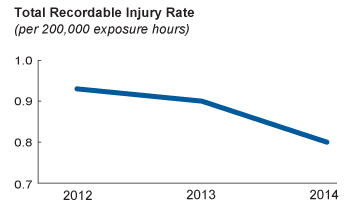
Lost Time Injuries
The Company maintained a Lost Time Injury Rate in 2014 of 0.14 per 200,000 exposure hours.
Husky continues to strengthen the safety culture at its worksites, encouraging employees and contractors to apply the Husky Operational Integrity Management System, a consistent, enterprise-wide approach to managing operations, and to use a critical eye to identify and mitigate major accident hazards.
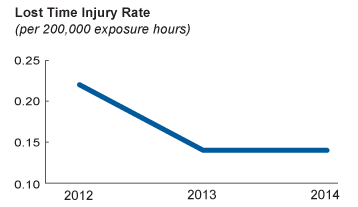
Driving
The Corporate Driving Standard includes mandatory driver training and vehicle monitoring devices that provide drivers with reports on their speed, seatbelt use and driving practices to improve performance.
Forty-seven employee motor vehicle accidents were recorded last year, compared to 54 the year before. The Company’s fleet of approximately 1,400 vehicles covered more than 35 million kilometres in 2014.
Offshore
Husky’s well management program offshore Newfoundland and Labrador begins at the planning stage and continues through construction, commissioning and operation.
It includes wellbore monitoring, inspection of subsea trees, testing of subsurface safety equipment, plans for blowout mitigation and an inventory of relief well materials.
During operations, at least two independent and tested well barriers are in place.
The Company works with area operators to provide mutual emergency aid and participates in a number of international safety initiatives.
Incident Tracking
Workers report events through the Company’s comprehensive incident tracking tool, which allows for ongoing monitoring and assessment to better prepare for potential operational incidents.
All “loss” and “no loss” (near-miss) events are tracked. Investigation results, action items and lessons learned are used for safety alerts, statistics reports, risk analysis, management reporting and training development.
Streamlining how events such as injuries, equipment failures and complaints from the public are reported and reviewed can proactively reduce the probability of repeat events.
Industrial Hygiene
Identifying and controlling occupational health hazards allows Husky to understand potential exposures and prevent the development of occupational illnesses.
In 2014, 49 surveys, with samples from more than 500 employees and areas, were taken to assess exposure to potentially hazardous materials or environments. Comprehensive Qualitative Health Hazard Assessments were completed at two facilities, providing baseline information to better understand site-specific risks. To improve its surveillance data beyond long-term exposure, the Company began collecting short-term exposure information.
Workplace communications, including exposure control plans, are in place to support the safe and proper handling of chemicals, and a training plan is being developed to ensure company-wide awareness. Husky aligns the chemical inventories at its North American operations with a system-wide record of material safety data sheets and related documents available to workers.
